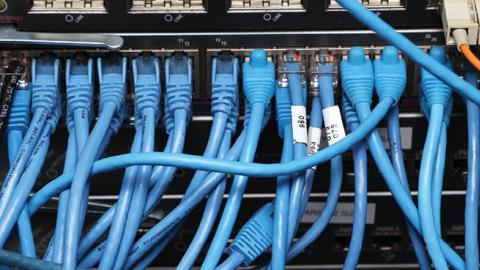Americans proved resilient during the COVID pandemic, in major part because of American broadband. In most areas of the country, American broadband is fast, reliable, competitive, privately-provided, and affordable. And thanks to American broadband, millions of Americans were able to continue to work, attend classes, receive medical attention, shop for necessities, and communicate with loved ones in ways that were unimaginable just a few years ago—and are still unimaginable in most of the world. These successes are a testament to a simple but powerful economic principle: consumers are best served by private actors in competitive markets, rather than by government fiat.
Absent broad government intervention, American broadband continues to progress, with ever-growing coverage and improved speeds. Wireless carriers are deploying advanced 5G networks. And some companies are even offering new, satellite-based broadband services.
Despite this progress, Congress is introducing several bills, with price tags in the tens of billions of dollars, targeting broadband capabilities and services. If passed, the proposed price tags would rival all federal programs that supported rural broadband over the past quarter-century combined.
This issue is important, and the potential outlays are significant. Given the continued success of private American broadband service, we believe that a market-first approach is superior to heavy-handed, command and control alternatives. To that end, we offer six market-based principles for any congressional action on broadband:
1. The benefits of targeted broadband legislation must surpass comparable alternative solutions.
Government spending programs should be bounded and offer clear and tangible benefits that are greater than simply transferring the equivalent funds directly to individuals.
For example, it would cost $33 billion to send every American a $100 check. Notwithstanding the dubious benefits of such a proposal, a $33 billion alternative that specifically targets broadband should have benefits that are clearly and tangibly greater than the cash-transfer proposal. Some of the bills being introduced in Congress do not pass this test.
2. Focus on high-cost, hard-to-reach areas and let existing income transfer programs aid low-income households.
Most, but not all, Americans enjoy substantial competition among broadband providers. Yet some Americans living in remote areas of the country do not enjoy similar service. Narrowly targeting government broadband investment in these underserved areas—primarily in the Great Plains, the Rockies, and Alaska—best addresses this issue
Other Americans don’t benefit from broadband because of low household income. This is just as important of an issue as expanding coverage in underserved areas. But this doesn’t mean that broadband providers should be forced to sell services at a discount.
Instead, economists have found that general income transfers are the most-efficient policy method to address poverty. This is already in action today. Grocery stores aren’t required to sell discounted food to the underprivileged, nor are clothing stores forced to sell discounted clothing. It makes no more sense to require broadband providers to sell broadband service at a discount.
Moreover, it doesn’t make sense for the government to have multiple, smaller income transfer programs instead of one large transfer. Simply stated, broadband service should be considered when developing existing income transfer programs, rather than creating a new program just for broadband.
__2. Focus on high-cost, hard-to-reach areas and let existing income transfer programs aid low-income households.__
Most, but not all, Americans enjoy substantial competition among broadband providers. Yet some Americans living in remote areas of the country do not enjoy similar service. Narrowly targeting government broadband investment in these underserved areas—primarily in the Great Plains, the Rockies, and Alaska—best addresses this issue
Other Americans don’t benefit from broadband because of low household income. This is just as important of an issue as expanding coverage in underserved areas. But this doesn’t mean that broadband providers should be forced to sell services at a discount.
Instead, economists have found that general income transfers are the most-efficient policy method to address poverty. This is already in action today. Grocery stores aren’t required to sell discounted food to the underprivileged, nor are clothing stores forced to sell discounted clothing. It makes no more sense to require broadband providers to sell broadband service at a discount.
Moreover, it doesn’t make sense for the government to have multiple, smaller income transfer programs instead of one large transfer. Simply stated, broadband service should be considered when developing existing income transfer programs, rather than creating a new program just for broadband.
3. Don’t just duplicate existing high-cost broadband programs.
The federal government already has high-cost broadband programs in place at the Federal Communications Commission and the U.S. Department of Agriculture. These programs are not likely to disappear, and any new programs should not duplicate them.
Instead, any new high-cost program should focus on providing some, but not all, of the financing for one-time capital-intensive projects that would not be built otherwise. Funded programs should target those projects that can be built with some limited federal participation that, in turn, would attract private investment. Recipients of funds would bear the financial risk of project failure.
Additionally, new funds should specifically target capital expenditures and not ongoing operations, for which there are other programs at the FCC.
4. Let the market set technical standards and pricing.
Some proposed broadband bills set specific standards—including speed, capacity, latency, monthly caps, and even prices—for what qualifies as broadband service eligible for government programs. But it is far better to leave these technical choices and prices to the competitive pressures of markets than to the discretion of Congress or government officials.
In competitive broadband markets, consumers have a wide range of choices for technical specifications, performance, and price. Every consumer is different. While some may be willing to pay a premium for premium service, most prefer affordable prices and capabilities that serve their specific needs. Government fiats for technical standards and pricing rob American consumers of this important choice.
5. Don’t favor government broadband over private broadband.
Some bills introduced in Congress give a strong preference to government-owned, rather than privately-owned, broadband networks. Favoring government ownership over private ownership would be a step backwards for American consumers and for the future of American global competitiveness.
Most of the world experimented with government ownership of communications networks in the first nine decades of the 20th century. It was a failed experiment. Over the past 30 years, governments of all political stripes have privatized communications networks not because government ownership of networks helped consumers, but precisely because it did not. Private ownership of communications networks has always worked in America, and the imitation by other countries of the American paradigm of private network ownership is the sincerest form of flattery.
6. Government shouldn’t micromanage private networks.
In some countries, networks are private but closely managed by government agencies. The result is often too little capacity to meet surges in demand.
Europeans experienced this firsthand during the pandemic when their government resorted to rationing broadband service. During this same period of time, competitive markets with redundant networks and wide ranges of service offerings proved resilient in America.
Read in RealClear Markets




















